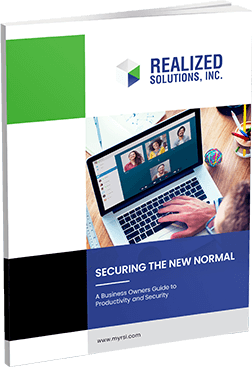Think of cloud computing as a digital community where your business can thrive, unhindered by traditional technological constraints. With cloud computing, your business isn’t just going through the motions—it’s operating at an elite level. From data storage to application development, everything happens at the speed of now. But like any community, rules are essential to keep things organized and safe. That’s where cloud security comes in.
The beauty of it all? It’s not as complex as it sounds. Let’s venture into a world where flexibility meets security and discover some cloud security best practices to make your business cloud journey smooth and secure.
What is Cloud Computing?
Cloud computing can be defined as the delivery of on-demand computing resources, including data storage, processing power, and applications, over the Internet. Businesses can access these resources remotely from a third-party provider rather than storing data locally on physical computers or servers.
Cloud Migration Best Practices
Migrating to the cloud can bring numerous benefits to a business, such as cost savings, scalability, and increased productivity. However, it also introduces new challenges, particularly in terms of security.
Enterprises need to carefully plan and strategize their cloud migration process to ensure that data remains secure throughout the transition. Here are some cloud security best practices for a successful and secure cloud migration:
- Conduct a thorough risk assessment to identify potential security vulnerabilities before the migration process begins.
- Choose a trusted and reputable cloud service provider with robust security measures in place.
- Develop a detailed migration plan that includes contingency measures in case of any data breaches or loss during the transition.
- Implement strong access controls and authentication methods to ensure only authorized individuals have access to sensitive data.
- Regularly test and monitor your cloud infrastructure to identify any potential security gaps and address them promptly.
Cloud Security Best Practices
Security is a critical aspect of cloud computing, and it’s essential to implement best practices to safeguard data and applications in the cloud. Here are some top cloud security best practices for businesses:
- Implement strong password policies that enforce complex passwords and multi-factor authentication.
- Regularly backup critical data and store it in multiple locations to ensure quick recovery in case of a security breach or disaster.
- Keep systems and software up-to-date with the latest security patches and updates.
- Monitor user activity and implement anomaly detection tools to identify any suspicious activities that could indicate a potential security threat.
- Educate employees about cyber threats, phishing scams, and other social engineering techniques to minimize the risk of human error leading to security breaches.
Initiating Your Journey to Cloud Security
Starting on your cloud security journey doesn’t have to be intimidating. Here’s a simplified step-by-step guide to help you navigate the process:
- Understand Your Cloud Environment: Familiarize yourself with the infrastructure of your cloud provider. Understanding the nuances of your cloud environment can help you identify potential vulnerabilities and develop effective security strategies.
- Identify and Prioritize Assets: Not all data is created equal. Identify which data and applications are most critical to your business operations and prioritize their protection.
- Implement Security Controls: Establish robust security controls, such as firewalls, encryption, and intrusion detection systems. Leverage the security tools offered by your cloud provider and consider third-party solutions if necessary.
- Regular Monitoring and Testing: Continually monitor your cloud environment for any unusual activities and conduct regular security audits and penetration testing to find and fix vulnerabilities.
- Invest in Training: Cyber threats are continually evolving, and so should your knowledge. Invest in regular training for your team to ensure they stay informed about the latest security threats and best practices.
Remember, cloud security is not a one-time task but an ongoing process that requires continuous attention and adjustment as your business and the threat landscape evolve.
Experience the Power of the Cloud with Realized Solutions
At Realized Solutions, we understand the importance of secure and efficient cloud computing for businesses. With our cloud solutions and expert team, you can trust us to guide you through your cloud journey while ensuring the safety and security of your data. Contact us today to learn more about how we can help you leverage the full potential of cloud computing for your business with our cloud security best practices.




